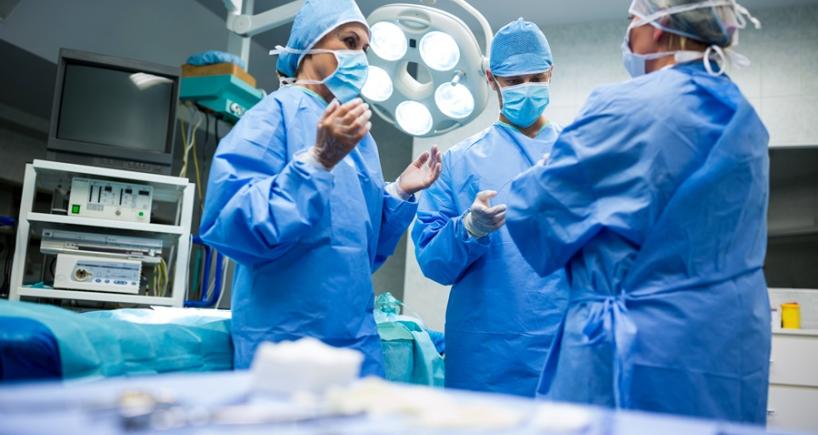
Robotic Surgery in Gynecology: A Revolution in Women's Healthcare
Introduction
In recent years, the field of gynecology has experienced a revolutionary shift with the advent of robotic surgery. This cutting-edge technology has redefined the landscape of women’s healthcare, offering many advantages over traditional surgical methods. From enhanced precision to reduced recovery times, robotic surgery has emerged as a game-changer in the realm of gynecological procedures. It has reshaped the way we approach and treat various gynecological conditions.
Understanding Robotic Surgery
Robotic surgery, also known as robot-assisted surgery, is a minimally invasive surgery that utilizes robotic systems to help surgeons perform surgical procedures. It combines the precision of robotics with the skills of a surgeon, allowing for greater control, flexibility, and accuracy during surgery. The surgeon operates from a console that provides a magnified, 3D view of the surgical site during the surgery. The surgeon controls the robotic arms, which are equipped with surgical instruments and mimic the movements of the surgeon’s hands. The robotic system translates the surgeon’s movements into precise actions within the patient’s body, allowing for delicate maneuvers in confined spaces with enhanced stability and control.
How Does Robotic Surgery Help in Gynecology?
Some of the areas where robotic surgery is commonly used in gynecology include:
- Hysterectomy: Robot-assisted surgical removal of the uterus with less pain, blood loss, and faster recovery compared to a traditional open surgery
- Myomectomy: Robot-assisted removal of uterine fibroids while preserving the uterus. The procedure enables surgeons to perform intricate movements, which is beneficial when dealing with delicate tissues
- Endometriosis Surgery: Robotic surgery is used to excise endometrial tissue in cases of endometriosis, where the tissue that usually lines the inside of the uterus grows outside, reducing the risk of damage to the surrounding tissues and organs
- Ovarian Cystectomy: Robot-assisted ovarian cystectomy for the removal of ovarian cysts (fluid-filled sacs that can develop on the ovaries). This approach is especially advantageous for complex cases or when ovarian function needs to be preserved
- Pelvic Floor Reconstruction: Robotic surgery for pelvic floor reconstruction procedures, such as sacrocolpopexy, to repair pelvic organ prolapse
- Tubal Reanastomosis: Robotic surgery to reconnect the fallopian tubes, allowing for natural conception
- Gynecologic Oncology: Robotic surgery for procedures such as radical hysterectomy, lymphadenectomy, and staging surgeries for gynecologic cancers like cervical, endometrial, and ovarian cancer. Robot-assisted surgery is also used for lymph node dissection to assess the spread of a cancer while minimizing surgical trauma.
Benefits of Robotic Surgery in Gynecology
The advantages of using robotics in gynecological treatment include:
- Greater Precision: Unlike conventional surgical techniques, which rely solely on the surgeon’s talent and skill, robot-assisted procedures offer greater accuracy, control, and maneuverability in delicate areas, such as reproductive organs. This precision minimizes the risk of complications and ensures optimal outcomes for patients.
- Minimally Invasive Approach: Minimally invasive procedures involve smaller incisions and less trauma to surrounding tissues. This approach reduces patients’ scarring, ultimately improving their overall quality of life.
- Expanded Surgical Capabilities: Robotic surgery enables gynecologists to tackle a broader range of complex procedures efficiently. The robotic system’s flexibility allows surgeons to access hard-to-reach areas, resulting in quicker, safer surgeries.
- Improved Visualization: Robotic systems use high-definition cameras that provide the operating area with clear, enlarged, three-dimensional perspectives. This enhanced visualization enables surgeons to navigate intricate anatomy more efficiently, resulting in better decision-making and surgical outcomes.
- Reduced Blood Loss and Complications: The procedure minimizes intraoperative blood loss by enabling surgeons to effectively cauterize (destroy tissue using a hot or cold instrument) blood vessels. Additionally, the minimally invasive nature of robotic surgery reduces the likelihood of postoperative complications, such as infections and hernias.
- Quicker Recovery and Return to Normal Activities: Robotic surgery revolutionizes the postoperative experience for gynecological patients by facilitating faster recovery and return to normal activities than traditional open surgeries. The smaller incisions and reduced tissue trauma associated with robotic surgery contribute to decreased pain and discomfort, allowing patients to resume their daily routines sooner. This expedited recovery improves patient satisfaction and minimizes the economic burden of prolonged hospital stays and recovery.
- Improved Cosmetic Outcomes: The cosmetic benefits of robotic surgery are significant, where aesthetic concerns may be paramount for patients. The smaller incisions and minimized scarring associated with robot-assisted techniques result in more aesthetically pleasing outcomes than traditional open surgeries. Achieving optimal cosmetic results can significantly impact women’s self-esteem and body image.
Risks Involved
It is important to note that while robotic surgery offers several advantages, it is crucial to be aware of the procedure’s limitations. The risks are as follows:
- Despite the precision of robotic systems, there is still a risk of unintentional injury to nearby organs or tissues during the surgery.
- As with any surgical procedure, there is a risk of infection at the surgical site or within the abdominal cavity.
- While robotic surgery typically results in less blood loss than traditional open surgery, there is still a risk of bleeding during and after the procedure.
- Prolonged immobility during surgery and recovery can increase the risk of blood clots.
- Technical malfunctions or equipment failures with the robotic system can occur, potentially necessitating interruption or conversion of the procedure.
- While robotic surgery has been shown to offer benefits such as shorter hospital stays and faster recovery times, the long-term outcomes and efficacy of robotic procedures compared to traditional surgery are still being studied in many cases.
In conclusion, robotic surgery represents a groundbreaking advancement in gynecology, offering many advantages that have transformed the landscape of women’s healthcare. From enhanced precision and minimally invasive approaches to expanded surgical capabilities and improved patient outcomes, robot-assisted procedures have revolutionized how gynecological conditions are diagnosed and treated. As technology continues to evolve, the potential for further innovations in robotic surgery holds promise for even more significant advancements in women’s health.
Popular Searches :
Hospitals: Cancer Hospital in Delhi | Best Heart Hospital in Delhi | Hospital in Amritsar | Hospital in Ludhiana | Hospitals in Mohali | Hospital in Faridabad | Hospitals in Gurgaon | Best Hospital in Jaipur | Hospitals in Greater Noida | Hospitals in Noida | Best Kidney Hospital in Kolkata | Best Hospital in Kolkata | Hospitals in Rajajinagar Bangalore | Hospitals in Richmond Road Bangalore | Hospitals in Nagarbhavi Bangalore | Hospital in Kalyan West | Hospitals in Mulund |
Doctors: Dr. Rana Patir | Dr. Rajesh Benny | Dr. Rahul Bhargava | Dr. Jayant Arora | Dr. Anoop Misra | Dr. Manu Tiwari | Dr. Praveer Agarwal | Dr. Arup Ratan Dutta | Dr. Meenakshi Ahuja | Dr. Anoop Jhurani | Dr. Shivaji Basu | Dr. Subhash Jangid | Dr. Atul Mathur | Dr. Gurinder Bedi | Dr. Monika Wadhawan | Dr. Debasis Datta | Dr. Shrinivas Narayan | Dr. Praveen Gupta | Dr. Nitin Jha | Dr. Raghu Nagaraj
Specialities: Heart Lung Transplant | Orthopedic |
Categories
Clear allMeet the doctor

- Obstetrics and Gynaecology | Obstetrics and Gynaecology | Gynaecologic Oncology
-
23 Years
-
800



















